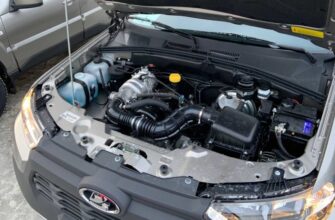- GT-RПравить
- ПримечанияПравить
- СсылкиПравить
- PowertrainEdit
- N1 enginesEdit
- MotorsportsEdit
- See alsoEdit
- DevelopmentEdit
- ConceptsEdit
- ProductionEdit
- 2013 updateEdit
- 2017 faceliftEdit
- 2020 updateEdit
- Discontinuation in export marketsEdit
- Official Nürburgring lap timesEdit
- Independent Nürburgring lap timesEdit
- Lap timesEdit
- DBA ModelsEdit
- 4BA ModelsEdit
- NismoEdit
- ReceptionEdit
GT-RПравить
В 2007 году в продажу вышел суперкар, получивший название Nissan GT-R. Компания Nissan решила назвать свой «заряженный» автомобиль GT-R, так как все предыдущие спортивные авто имели приставку GT-R в названии. Однако новая модель более не являлась частью модельного ряда skyline, а позиционировалась как отдельная модель.
Nissan GT-R оборудован шестицилиндровым V-образным двигателем VR38DETT, объемом 3. 8 литра с двумя турбокомпрессорами. Мощность силового агрегата Nissan GT-R 480 л. при 6800 об/мин, максимальный крутящий момент составляет 588 Н·м при 3200-5200 об/мин. Nissan GT-R оборудован полноприводной трансмиссией с механически блокируемым дифференциалом и 6-ступенчатой коробкой передач с двойным сцеплением. Особенность трансмиссии — наличие двух карданных валов. Максимальная скорость GT-R составляет 310 км/ч, это при том что разгон 0-100 км/ч всего за 3. 5 секунды, а с включенной системой управления пуском всего 3,3 секунды.
В стандартной комплектации Nissan GT-R идут шины Bridgestone RE070A: передние 255/40 R20 и задние 285/35 R20, диски выполняются из сверхлегкого алюминиевого сплава. Рабочая тормозная система — дисковые 15″ тормоза от Brembo с 6-поршневыми суппортами спереди и 4-поршневыми сзади. Присутствуют ABS, Brake Assist, EBD. Подвеска у Nissan GT-R — Bilstein DampTronic, независимая, с режимами: Sport/Normal, Comfort и R mode.
ПримечанияПравить
- Mark Dodd. GTR-Registry.com — EN-R31-GTS-R (англ.) ?. gtr-registry.com. Дата обращения: 7 апреля 2017. Архивировано 18 апреля 2017 года.
- Mark Dodd. GTR-Registry.com — EN-R32-Production (англ.) ?. gtr-registry.com. Дата обращения: 7 апреля 2017. Архивировано 7 апреля 2017 года.
- Mark Dodd. GTR-Registry.com — EN-R33-Production (англ.) ?. gtr-registry.com. Дата обращения: 7 апреля 2017. Архивировано 7 апреля 2017 года.
- Mark Dodd. GTR-Registry.com — EN-R34-Production (англ.) ?. gtr-registry.com. Дата обращения: 7 апреля 2017. Архивировано 7 апреля 2017 года.
- IGCD.net: Statistics. www.igcd.net. Дата обращения: 5 февраля 2020.
СсылкиПравить
The Skyline name originated from Prince automobile company, which developed and sold the Skyline line of sedans before merging with Nissan-Datsun.
The next development of the GT-R, the four-door PGC10 2000 GT-R, scored 33 victories in the one and a half years it raced, and by the time it attempted its 50th consecutive win, its run was ended by a Mazda Savanna RX-3. The car took 1,000 victories by the time it was discontinued in 1972. The last of the original GT-R models, the KPGC110 2000GT-R, used an unchanged S20 119 kW (160 hp) inline-6 engine from the earlier 2000 GT-R and only 197 units were sold due to the worldwide energy crisis. This model was the only GT-R to never participate in a major race despite being developed as a sole purpose-built race car, which now resides in Nissan’s storage unit for historical cars in Zama.
The Skyline continued into the 1990s when it became popular largely because it remained rear wheel drive, while most other manufacturers were focusing on front wheel drive cars.
Throughout its lifetime, various special editions containing additional performance-enhancing modifications were introduced by Nissan and its performance division Nismo (Nissan Motorsport).
PowertrainEdit
The 2. 6-litre RB26DETT as used in the R32 and R33 Skyline GT-Rs
The GT-R of the 1990s included a 2. 6 L straight six-cylinder twin-turbo engine producing 206 kW (280 PS; 276 hp). The standard turbochargers were of a hybrid steel/ceramic design allowing them to spool up faster due to the light nature of the ceramic exhaust wheel.
The drive train delivered power to all four wheels using an electronically controlled all-wheel-drive system Nissan called the ATTESA E-TS. This system used two accelerometers mounted under the center console, which fed lateral and longitudinal inputs to the ECU. The ECU then controlled power delivery to the front wheels via an electronic torque split converter. In 1995, the ATTESA E-TS Pro was introduced as an option for R33 GT-R customers, and came as standard equipment in GT-R V•Spec models. It was later standard equipment in all GT-R models for the R34 Skyline GT-R. The ATTESA E-TS Pro added an Active Limited Slip Differential, which was controlled by the onboard ATTESA computer. This was only for the rear differential, as the front differential remained as a normal Limited Slip Differential. The ATTESA E-TS Pro was also advertised in brochures as adding an electronically controlled 4-channel ABS brake system. Although it is not related to the all wheel drive system, it uses much of the same sensors, and the same computer. The R32 could be switched from AWD to RWD by removing the 4WD fuse, but R33 and R34 models had to have the front tailshaft removed, or the centre diff can be depressurised for ‘towing mode’ as specified in the owners manual.
N1 enginesEdit
The final N1 engine is the R34 Nür engine. The only differences are the cam cover colour change from red to gold and R34 Nür edition was a fully loaded street car. There were 1,000 Nür engines made for use in the R34 V. spec II Nür and R34 M-spec Nür models.
MotorsportsEdit
The CALSONIC R32 GT-R from the Group A series
The GT-R’s history of racetrack dominance began with its 50 victories scored from 1968 to 1972, including 49 consecutive wins in the Japanese race circuit. Nissan pulled out of racing shortly after the introduction of the KPGC110 due to the 1973 oil crisis.
The Skyline GT-R later earned the nickname «Godzilla», as a play on its «monster» track performance and country of origin. The R32 GT-R dominated the Japanese Touring Car Championship, won all 29 races it entered in the series, as well as taking the series title every year from 1989 to 1993.
A Nissan R34 GT-R GT500 competition car
It took 50 races from 50 starts from 1991 to 1997 (latterly R33) in the N1 Super Taikyu. The GT-R’s success sounded the death knell of Group A Touring Car racing; with the formula being scrapped soon after. JTCC was similarly dominated by the R32 GT-R, and splintered soon after, leading to the switch to the Supertouring category and also indirectly to the GT500 category of today.
In the UK, Andy Middlehurst took the Nissan Skyline GT-R (R32) to two consecutive championship wins in the National Saloon Car Cup. Other championship titles include the 1991 Australian Touring Car Championship (Jim Richards), the 1991 Australian Endurance Championship (Mark Gibbs & Rowan Onslow), the 1991 Australian Manufacturers’ Championship, the 1992 Australian Touring Car Championship (Mark Skaife) and the 1992 Spanish Touring Car Championship.
Janspeed provided three cars to race in Europe. One car to run for Andy Middlehurst in the UK in the National Touring Car Series. In 1990 they entered three cars in the SPA-Francorchamps 24 hours. They managed a tremendous finish of one, two and three in class. Three cars were entered to run in the SPA 24 hours in which it finished first and second in its class (Group N) in 1991. A GT-R Group A car also took first overall. In 1992 they finished second in Group N with the Group A entry retiring due to a pit fire.
The GT-R debuted in the US at 1994 Rolex 24 Hours of Daytona. Nismo entered a sole Group A specification R32 for the GTU category. This car was so fast in the infield section in the first practice that the competition colluded to have restrictors fitted. The team was not allowed to run again until they fitted them. They eventually finished 20th. NISSAN was probably not too upset as they did not import the GT-R model to the USA. However, they did sell the 300ZX and it was one of those that won.
In 2006 Automotive Forums. com became the first team to compete with an R34 GT-R in the United States, participating in the Speed World Challenge GT series. Team: Driver and President of Automotive Forums. com Igor Sushko, Crew Chief Sean Morris, Team Manager Victor Reyes, Mechanic Josh Mitchell, and Engineer Merritt Johnson.
See alsoEdit
Nissan GT-R and some older, high-performance variants of the Nissan Skyline
DevelopmentEdit
Nissan’s CEO Carlos Ghosn purchased the first ever production Nissan GT-R
Overall design director of the GT-R, Shiro Nakamura
Aerodynamics development of the GT-R began in early 2004 with a group of company’s best engineers, including the developer of the Nissan’s successful Le Mans prototypes, Yoshi Suzuka. Development started with an internal design competition between Nissan’s design studios of Atsugi and Tokyo in Japan, London in United Kingdom and La Jolla in United States. Nissan received more than 80 sketches from the respective design studios and 12 of them chosen by Nissan with the help of design director, Shiro Nakamura. Those 12 sketches whittled down to three models and headed into the wind tunnel by GT-R’s exterior designers. Nissan wanted an aerodynamic level of the GT-R, which can aid great stability for the car, creat enough amount of downforce while maintaining a lower amount of drag to improve fuel efficiency and acceleration. So the target of the team was to make the GT-R with a drag coefficient of Cd=0. 28 combined with front and rear downforce, which wasn’t done by any manufacturer at the time. Engineers considered, to achieve that by using active aerodynamics will be easier. But later rejected it because of the car’s price will be higher than the price Nissan planned to offer.
In August 2004, Yoshi Suzuka and Ken Nambo began wind tunnel tests at Nissan Technical Centre in Atsugi, Japan. From over a 3-month time period, they tested those three models in 1/4 scale size at the wind tunnel for nearly 300 times and got positive results for their further development. Then they decided to replace them by 40% scale sized two models, one for the development of the GT-R and another one for the Nissan Skyline V35/Infiniti G35 coupe test mule which was built for testings at the Nürburgring. From the first runs of this scale model, resulted a drag coefficient of Cd=0. Later, GT-R’s exterior designers, Hirohisa Ono and Masato Taguchi also joined in the wind tunnel tests. Joint team tweaked some exterior parts of the GT-R, specially the front nose height. From exterior changes engineers couldn’t improve the overall aerodynamics as that much as they expected.
ConceptsEdit
Nissan GT-R test mules being transported by a truck in Japan
ProductionEdit
A 2013 Nissan GT-R Premium with the updated design
2013 updateEdit
improved headlights of the 2015 model year GT-R
improved taillights of the 2015 model year GT-R
2017 faceliftEdit
2017 model year Nissan GT-R with new updates
Updated 2017 model year Nissan GT-R Nismo
In 2016, for the 2017 model year, the updated Nissan GT-R has the same twin-turbocharged 3,799 cc (3. 8 L; 231. 8 cu in) V6 VR38DETT engine but increased the engine output to 421 kW (572 PS; 565 hp) at 6,400 rpm and 633 N⋅m (467 lbf⋅ft) at 3,200–5,800 rpm. The transmission system is also refined to shift the gears smoothly and quieter than before.
2020 updateEdit
new 20-inch alloy wheels and Bayside Blue body colour of the 2020 model year GT-R
Discontinuation in export marketsEdit
- Lap time done in wet condition.
- Nissan claimed lap time, unclear whether it’s an estimation or not.
Official Nürburgring lap timesEdit
In February 2013, Nissan opened the new Nismo headquarters in Yokohama. Nissan’s CEO Carlos Ghosn considered to introduce a track-oriented version of the GT-R, named as GT-R Nismo. He wanted the GT-R Nismo to set a production vehicle lap record at the Nürburgring Nordschleife and to be sold as the leading Nismo brand within a year. On May 18 development began, with Nissan’s chief vehicle engineer Noboru Kaneko, who appointed after the retirement of Kazutoshi Mizuno. Led the joint Nismo and Dunlop Tyres effort to set the production vehicle lap record at the Nürburgring.
On June 26, the team started testing with standard GT-R test mules at Sendai Hi-Land Raceway. On July 16, the team visited the Nürburgring to collected data and aid development, with it the team built the GT-R Nismo and its aerodynamic development was finalized after testing it at the Sendai Raceway on July 24.
Independent Nürburgring lap timesEdit
Note: these tests were done with customer specification vehicles with standard fuel, journalist driver, traffic and electronic stability control (ESC) switched on.
Lap timesEdit
Driving Center Groß Dölln
Castle Combe Circuit
Mobility Resort Motegi
DBA ModelsEdit
Willow Springs — Street of Willow
Contidrom 3. 8 km Course
Suzuka International Racing Course
4BA ModelsEdit
Athens Circuit — Megara
NismoEdit
Nissan GT-R Nismo camouflaged prototype at the Goodwood Festival of Speed
Nürburgring GP 5. 15 km Course
Willow Springs — Street of Willow
Willow Springs International Motorsports Park
2018 model year Nissan GT-R Nismo Tsukuba Circuit time attack vehicle
Maze Sea Circuit
ReceptionEdit
2012 model year Nissan GT-R
Источник:



